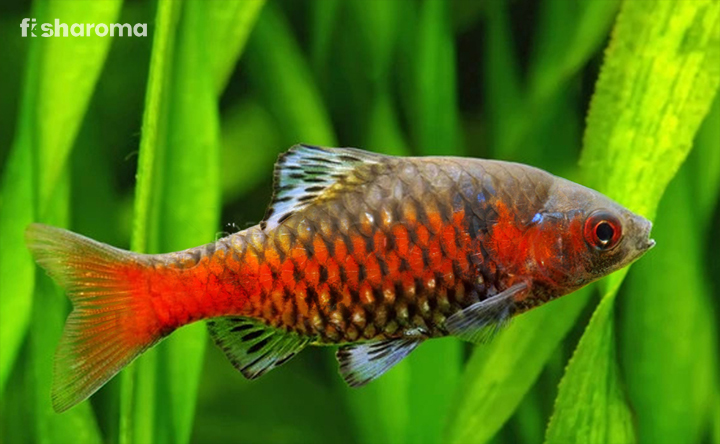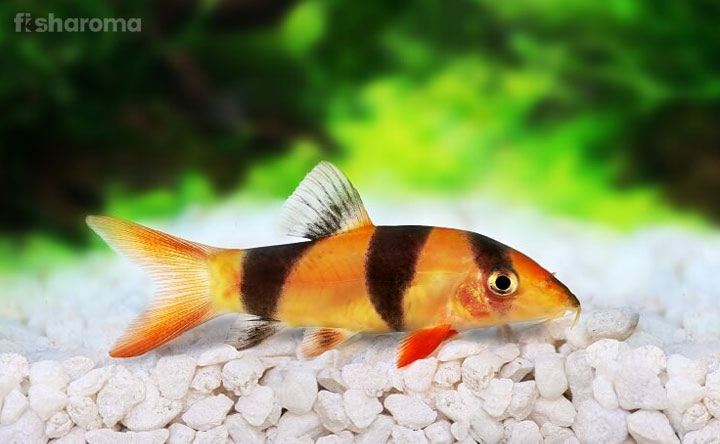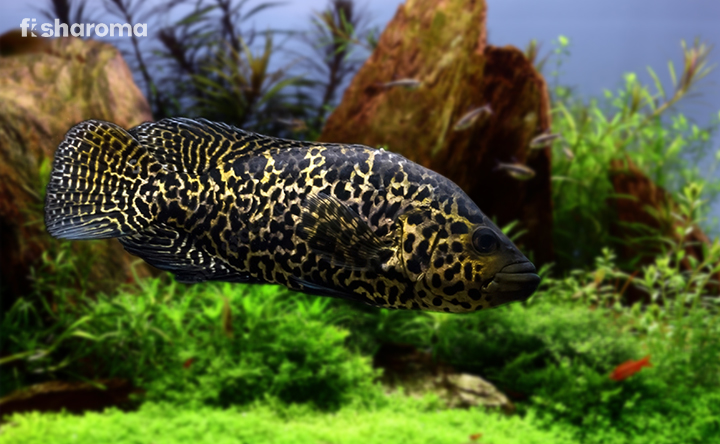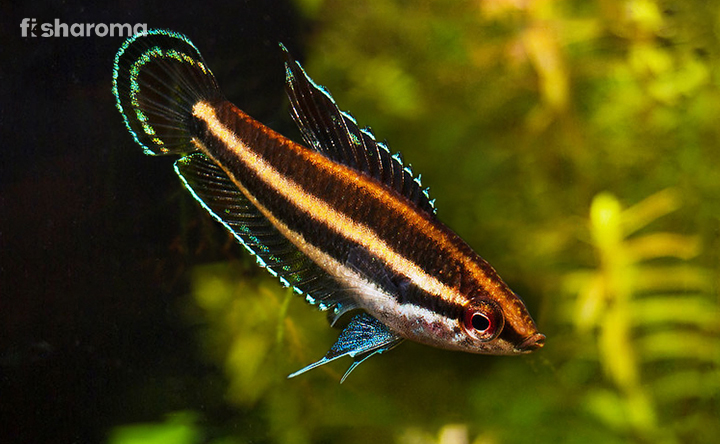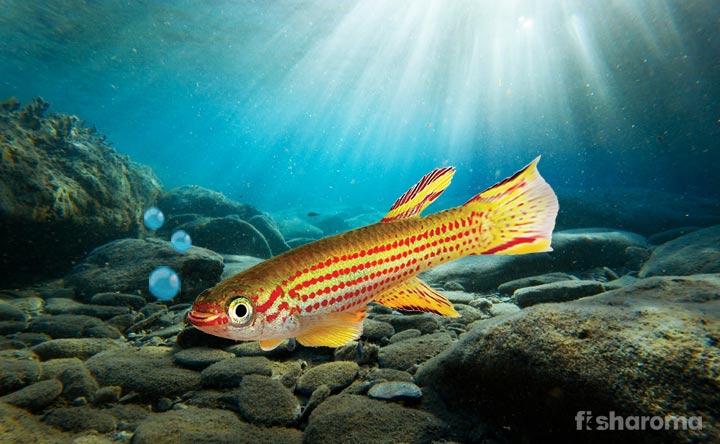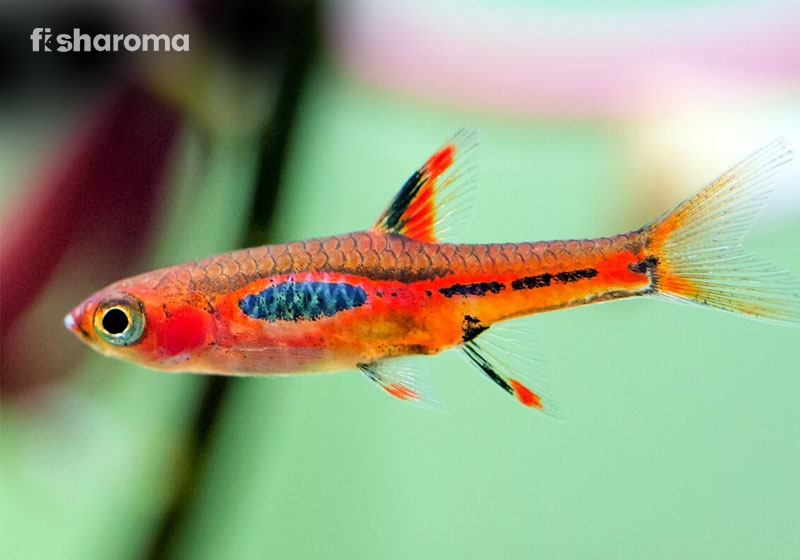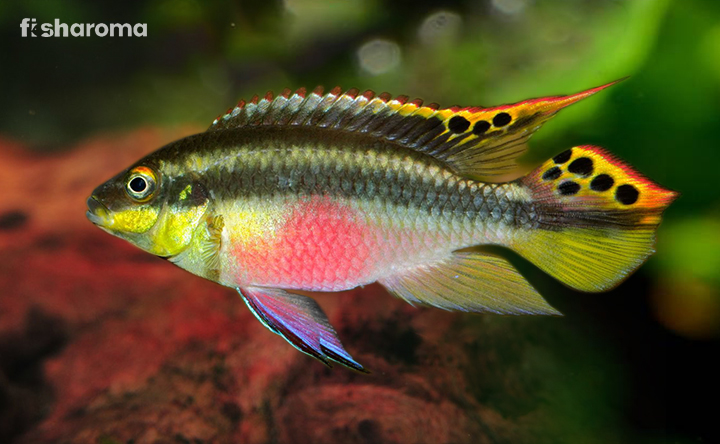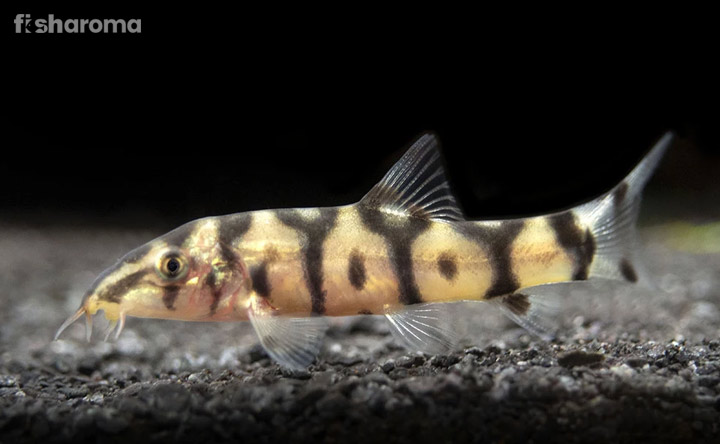An Inclusive Care Guide of Zebra Pleco Care Guide
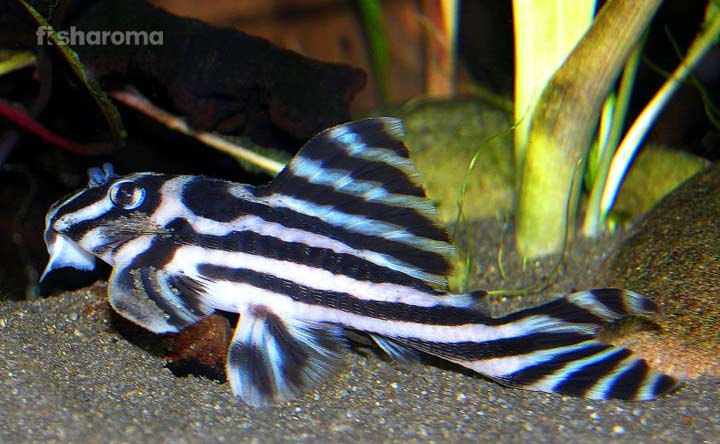
Zebra Pleco is one of the most fascinating freshwater species that you can host in your aquarium, but for it to grow healthily in a captive environment, you need to be aware of its living conditions and tank requirements, among other things. And this is what we are going to discuss today in our all-inclusive care guide for the same.
So, get ready to welcome this magnificent creature at home with the help of our guide.
Key Specifications of Zebra Pleco
Take a look at the following details so that you get some clarity about the living conditions of a Zebra Pleco before we discuss each of them in detail later in the article.
| Scientific Name | Hypancistrus zebra |
| Origin | Brazil |
| Lifespan | 10-15 Years |
| Colours | Black and White |
| Temperament | Territorial but Peaceful |
| Size | 3-4” (7.6-10.2 cm) |
| Diet | Omnivore |
| Family | Loricariidae |
| Compatibility | Moderate |
| Tank Size | 30 Gallons |
| Care Level | Moderate |
Overview
When it comes to spectacular species of Catfish, one can’t help but mention Zebra Plecos for their remarkable appearance. However, in recent years, they have become an endangered species owing to the detrimental effects of various man-made dams on their natural habitat.
It shouldn’t surprise you that since they are so rare, they come at a heavy price. To help bring their population back to normal, the Brazilian government has decided to ban the export of these species. This is why almost all Zebra Plecos that you see in an aquarium are bred in captivity.
Another interesting aspect of Zebra Plecos is that they are pretty new to the aquarium world since they were first discovered in the early 1990s.
Origin & Habitat of Zebra Pleco
Native to Brazil, Zebra Plecos are seen in the Xingu River, which is essentially a tributary of the Amazon River. They thrive in water that has a strong current, which explains why the creation of dams affects their lives in a negative way. This was seen more apparently with the construction of Belo Monte Dam in Xingu.
It also requires a handful of hiding spots in its vicinity as it replicates its natural habitat. In the wild, they prefer low-lights and gravel, pebbles, and smooth sand for their substrate.
Their scientific name is Hypancistrus zebra.
Appearance of Zebra Pleco
Evident by their name, the most distinct aspect of Zebra Plecos is the fact that their appearance resembles Zebras. We will discuss this in our sub-section ‘Colour of Zebra Pleco’. They are also identified by their flat bottom and sucker mouth. It should be noted that their mouth is much smaller than other species of Catfish.
Much like most Catfish, they also have notable four whiskers, which they use to explore their ambiance.
Furthermore, you would also notice their big, bulgy eyes which help separate them from your average freshwater aquarium species. Their dorsal fin is in the shape of a triangle and stands up tall, however they can lay it down as per their wish. They also have two sets of pectoral fins on the sides of their bodies and a set of large rayed fins.
The pectoral fins that are located closest to the head of Zebra Pleco are pretty hairy.
If you are looking towards distinguishing the males from the females, then you would have to look minutely. The females have a smaller and narrower head compared to their male counterparts. Males also have more hair on their pectoral fins.
Size of Zebra Pleco
Being one of the smaller Catfish, they grow up to 3-4” (7.6-10.2 cm) in length.
Colour of Zebra Pleco
As we stated above, the colours of Zebra Pleco are what makes them so much in demand. They have black and white lateral pattern stripes on their bodies. Under proper lighting, these stripes really pop out and shine. Naturally, this is great for the aesthetic element of your aquarium. Please remember that these stripe patterns are more prominent in younger Zebra Plecos.
Behaviour of Zebra Pleco
Zebra Plecos are pretty docile and are generally regarded as one of the more introverted species. This explains why they need so many hiding spots in their vicinity. There would be time when you wouldn’t see them for many hours because of how much they like retreating and hiding.
They are nocturnal species and stay most active at night. If you stay up at night, you may get the pleasure of watching them scavenging for food at night.
Since they are extremely shy, they are also very territorial. The male Zebra Plecos tend to be more territorial than their female counterparts and can often get into fighting over territorial claims. So, if you are hosting more than one male Zebra Pleco in your home, make sure that you have a large aquarium. However, this fighting nature of the male comes in handy as it helps in protecting the eggs and fries.
Lifespan of Zebra Pleco
If you are planning to host them, you will be there for the long haul. They have a long lifespan and can live up to 10-15 years. This means a lot of commitment from your end. So, make sure you are prepared for it because you just can’t dump them in a nearby pond after a couple of years since they would die as they wouldn’t know how to protect themselves in the wild.
Providing them with a stress-free environment would add to their lifespan.
Diet of Zebra Pleco
Zebra Plecos have a large appetite despite their small stature. They are predatory by nature, although don’t confuse it with them being aggressive.
This means that you need to ensure that all of your fish are getting food as they are not well-acquainted with the idea of competing for food. Therefore, pick a quiet spot in your aquarium to feed them. This would lessen their stress level.
They have a huge requirement of protein and eat more meat than most other species of Catfish. They will also feast on small invertebrates. However, don’t forget to provide them with vegetation in the form of algae and vegetables.
Please remember that they have a small mouth. So, make sure whatever food you are providing them with are broken down into extremely small chunks. They also consume dried food as long as they are rich in protein. However, moisten the dried food before putting it in the tank. We recommend feeding them pellets than flakes as they hang out the bottom of the tank. If you are providing them with frozen food, make sure to defrost it first.
Remember, the majority of their food should be meat-based.
Some of the ideal food options for Zebra Pleco are as follows:
- Algae Wafers
- Bloodworm
- Brine Shrimp
- Blanched Zucchini
- Blanched Cucumber
- Crushed peas
Tank Requirements for Zebra Pleco
To keep them healthy, you need to replicate their natural habitat. And to do that, you would have to fulfil the following tank conditions.
Tank Size
For a single Zebra Pleco, we recommend using a 30-gallon tank. If you are hosting more than one, just use the same ratio to increase the tank size.
Tank Lid
It is always safe to use a tank lid for your aquarium since you don’t want any children or pets to mess with your Zebra Plecos. In addition, this also means that they wouldn’t accidentally jump out of the tank and that there would be no accumulation of dirt and dust.
Substrate
As we said before, in the wild, the substrate they are used to is smooth sand, gravel and pebbles. So, try and provide the same here in your aquarium.
Filter
Having a strong filter is extremely important for the tank that hosts a Zebra Pleco. Not only will it keep the water clean and aerated, but it will also help in fulfilling one of the most important criteria they need to survive – strong currents. When there are strong currents and movements in the water, they thrive.
Ornaments
Since Zebra Plecos love to hide, you need to provide them with a lot of hiding spots. Apart from using large pebbles and rocks, you may use artificial castles and caves. However, make sure they don’t have any sharp edges or toxic artificial colours since that is harmful to your Zebra Pleco.
Presence of Flora
Zebra Plecos appreciate plants in their environment. So, feel free to add some aquatic pets in your tank.
Lighting
They prefer low lighting in their vicinity. So, please ensure that the lights of the aquarium aren’t too bright and that they are switched off for at least 12 hours in a day.
Cleaning Method
Cleaning your tank regularly is extremely important for their health. Clean the tank at least once a month. For cleaning, never use any chemical or soap-based products as that would leave harmful residue in the tank. Use a soft cloth that is dipped in lukewarm water to wipe off the interior glass walls.
You may use a soft brush to clean the ornaments and you can run the substrate under tap water to get rid of any debris.
Water Type for Zebra Pleco
Choosing the right type of water is crucial for their health. Here are some of the things you need to keep in mind.
Temperature
The temperature of the tank water should be 79°F to 88°F (26.1°C to 31.1°C).
pH Level
The pH level of the tank water must be 6.5-7.0.
Hardness
The carbonate hardness of the tank water that hosts a Zebra Pleco should be 2-6 dKH.
Mineral Level
The level of ammonia and nitrite should be zero and the level of nitrate should be as minimal as possible. We suggest doing a fishless nitrogen cycle before you add your Zebra Plecos to the tank.
Replacement Procedure
As for water replacement, you can opt for one of the following options. You may:
- Replace 10% of the tank water every seven days, or
- Replace 25% of the tank water every 15 days, or
- Replace 50% of the tank water every 30 days.
Choose only one of the aforementioned methods. Make sure the new batch of water has the same water parameters (temperature, pH level and hardness) as that of the existing batch of water. Also never replace the entire water content altogether.
Compatibility of Zebra Pleco
As we stated above, if you want to keep more than one Zebra Plecos together, you need to provide them with ample space, especially the male ones as they are extremely territorial.
They are bottom-feeders. As such, keeping them with fish species that mostly reside in the top and middle portion is ideal.
Suitable Tankmates for Zebra Plecos
Some of the suitable tankmates for Zebra Plecos are as follows:
- Kuhli Loach
- Zebra Otocinclus
- Bumblebee Goby
- Celestial Pearl Danio
- Cherry Barb
- Apistogramma
- Cory Catfish
- Platy
- Harlequin Rasbora
- Ember Tetra
- Denison Barb
- Phantom Tetra
- Cherry Shrimp
- Snail
Unsuitable Tankmates for Zebra Plecos
Don’t keep them with aggressive species. Also, avoid keeping them with bottom-dwellers that are more active and large in size than them. You must keep in mind that they prefer strong currents, something which not a lot of other fish may be comfortable with.
Some of the unsuitable tankmates for Zebra Plecos are as follows:
- Threadfins
- Rainbowfish
- Endlers
- Hatcherfish
Breeding of Zebra Pleco
Breeding Zebra Pleco is super easy. In order to encourage breeding, you need to increase the oxygen level in your tank and raise the temperature to around 82°F (27.8°C).
When you notice the spikes protruding from the first ray of their pectoral fins of the males, it is a sign that they are ready to spawn. When this happens, the male traps the female in a cave until she lays her eggs. Males usually get very aggressive here with the females if they try to leave. This process may last 1-5 days and 15 eggs are usually laid by the female.
After this, the male fertilizes the eggs and the female leaves the cave. Usually, the males keep a watch over the eggs until they hatch. The eggs hatch 3-7 days after being fertilized. The male parent continues to look after the fries. The fries usually have a yolk sac under their bellies that disappears after a few days. Once that happens, you may feed them powdered fry food in small sizes.
Within 2-3 months, they look like small versions of their parents.
Zebra Pleco Diseases
Zebra Pleco are vulnerable to various bacterial and fungal infections alongside parasite Ich. But if you provide them with a clean environment, then the chances of them avoiding these health issues are significantly less.
Therefore, perform regular water replacement, clean the tank and use a proper aquarium filter. If you find your Zebra Pleco to be unhealthy, then quarantine it immediately and contact your veterinarian. Please remember that Zebra Plecos are intolerant of copper. So, don’t use any medication that has copper in it.
Summary
Zebra Plecos are extremely easy to pet as long as you provide them with a protein-rich diet. They are peaceful by nature but due to their shy nature, they display territorial behaviour. So, you need to provide them with a large space. They are an endangered species and they have a long lifespan. So, if you can’t commit to a long time, then don’t pet them since if you decide to dump them in a nearby pond after a couple of years, they won’t be able to survive.
Furthermore, provide them with a proper filter as it would help in keeping the water aerated and will create strong current in the water, which they need to survive.
Care Guides of Other Non-Fish Pets
If this article has interested you, we would like to believe that you would want to check out some of our other articles as well such as:
- Angelfish Care Guide: Despite being one of the most common aquarium pets, a lot is still not known about how to grow them healthily. Learn from our care guide as to how to do so.
- Flowerhorn Cichlid Care Guide: Bring home this unique fish and add an aesthetic element to your house.
- White Could Mountain Minnow Care Guide: One of the most elegant aquarium pets, see how you can grow them at home healthily.

